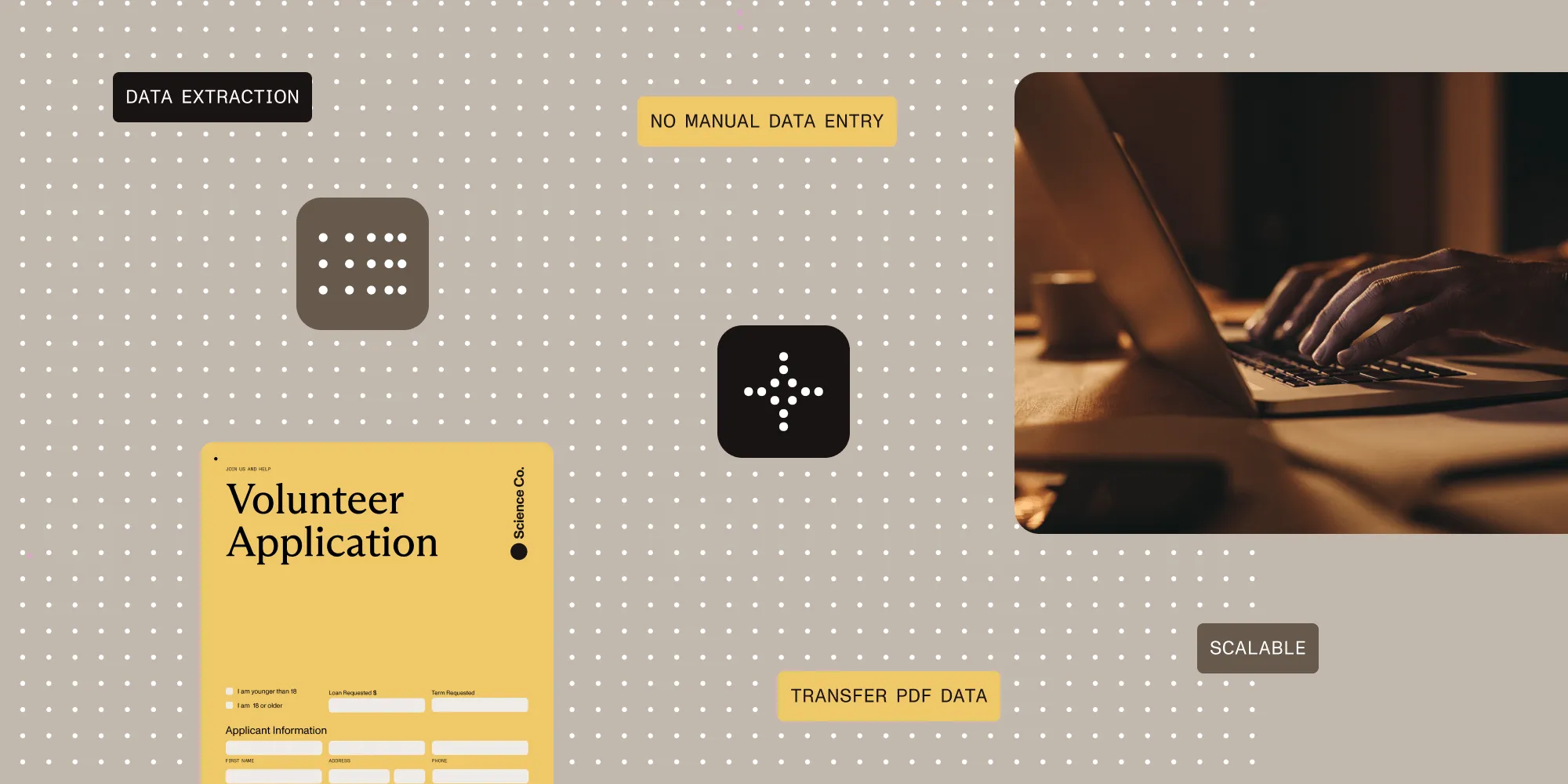The rise of no-code and low-code: Are enterprises ready for the next document revolution?
Table of contents

Today’s enterprises face mounting pressure to adapt — seeking smarter ways to work, respond faster to change, and operate more efficiently. In a time of rapid digital transformation, organizations must innovate quickly, streamline operations, and do more with fewer resources. Yet traditional software development and document workflows often fall short, weighed down by complex coding and slow delivery cycles.
To stay competitive, businesses need to reimagine how they build and automate their processes. The question is no longer if change is necessary, but how best to achieve it. The table below outlines the pros and cons of building in-house, outsourcing, and adopting low-code platforms — showing why low-code is becoming the go-to strategy for driving productivity and simplifying digital initiatives.
Cost and effort comparison: Building internally vs. outsourcing development vs. low-code workflows
| Criteria | Building internally | Outsourcing development | Low-code workflows |
|---|---|---|---|
| Initial cost | High — Requires hiring or using in-house developers | High — Vendor contracts and negotiation | Low — Often pay-as-you-go or included in existing licenses |
| Time to implement | Long — Full development lifecycle | Medium — Depends on vendor’s availability and scope | Fast — Drag-and-drop with prebuilt templates and connectors |
| Flexibility | Very high — Full control over the solution | Medium — Changes may need new contracts/sprints | High — Customizable within platform constraints |
| Maintenance overhead | High — Continuous updates, bug fixes, infrastructure support | Medium — Managed by vendor under SLA | Low — Most updates handled by the platform itself |
| Expertise required | High — Skilled developers needed | Medium — Dependent on vendor expertise | Low — Designed for citizen developers |
| Scalability | High — Needs infrastructure planning and resource scaling | Medium — Scaling may incur additional costs | High — Built-in scalability within the platform |
| Security and compliance | High — Fully customizable to internal policies | Varies — Based on vendor’s security practices | High — Compliant with industry standards (e.g. Microsoft 365) |
| Change management | Slow — New features require development cycles | Medium — Vendor-dependent turnaround time | Agile — Rapid iterations with minimal effort |
The low-code revolution
Low-code platforms are a game-changing approach democratizing software development and supercharging document automation. Low-code technology empowers even non-developers to create applications and automate workflows through intuitive visual tools instead of complex code. The result is a revolution in agility and efficiency for organizations aiming to optimize their document-heavy processes.
Low-code document automation enables businesses to generate, manage, and distribute documents with unprecedented speed and minimal IT overhead. By harnessing drag-and-drop interfaces and prebuilt components, teams can build document workflows and templates in a fraction of the time of traditional methods. In practical terms, this means contracts, reports, invoices, and other critical documents can be produced automatically, freeing employees to focus on higher-value tasks that actually drive revenue growth. Low-code isn’t just a buzzword; it’s a strategic shift that’s delivering greater agility and efficiency in enterprise document management.
Challenges enterprises face in governance, compliance, and security
While the benefits of low-code platforms in document automation are compelling, enterprises must also address critical concerns around governance, compliance, and security — especially when dealing with sensitive content in regulated environments.
- Legal holds and searchable archives — In legal or regulatory investigations, organizations are often required to place SharePoint sites on hold, preserving all content in its original state. If document workflows involve scanned PDFs or image files, optical character recognition (OCR) becomes essential. Without OCR, content may not be discoverable, posing a risk of non-compliance.
- Data residency and GDPR — Knowing where your content is processed is vital. With increasing scrutiny from regulations like GDPR, HIPAA, and others, organizations must know where their data is processed. While cloud-based platforms offer convenience, they also raise data sovereignty concerns. Organizations can choose to process documents either on-premises or in the cloud with regional data center options, ensuring compliance with data residency and regulatory requirements.
- Auditability and access control — By enabling detailed audit trails for every document action — from creation and modification, to routing and deletion — organizations can ensure full transparency and traceability. Implementing Role-Based Access Control (RBAC) further safeguards sensitive operations such as redaction, approvals, or access to legal archives by limiting permissions based on user roles. With platforms like SharePoint, which offer robust permission management backed by Entra ID (formerly Azure AD), it’s essential that low-code solutions honor and integrate with these existing security models. Modern low-code platforms make it easy to enforce these controls, helping enterprises meet both internal governance policies and external compliance requirements.
AI and automation are reshaping low-code document workflows
AI capabilities are increasingly being built into low-code platforms, making it easier for non-developers to create intelligent, responsive workflows. AI is becoming a game-changer in the low-code ecosystem, particularly for document management. When paired with automation, it enables intelligent workflows that go far beyond static form filling or basic document routing.
Here’s how AI is transforming document automation:
- Smart document classification — AI can automatically detect document types, such as contracts, invoices, and resumes, and streamline processing through autotagging, eliminating the need for manual sorting.
- Intelligent data extraction — OCR combined with AI models can pull context-aware data from scanned files or semi-structured forms, reducing the need for manual tagging.
- Natural language processing (NLP) — NLP models allow systems to interpret human language within documents, enabling sentiment analysis, red flag detection, or summarization.
- Predictive routing — AI can determine the best workflow path for a document based on historical patterns or business logic.
- Smart redaction — AI-powered redaction tools can automatically identify and mask sensitive information, such as names, financial data, or personally identifiable information (PII). This helps organizations meet compliance requirements without manual review of each document. Unlike manual redaction, smart redaction ensures no sensitive data is overlooked, even across large-scale document sets.
AI makes document workflows not just faster, but smarter. For enterprises dealing with high volumes of content, these advancements can significantly reduce manual oversight while enhancing accuracy and productivity.
Best practices for IT leaders
To effectively balance flexibility with IT control in low-code development, organizations should implement the following best practices:
- Create a center of excellence (CoE) — Create a dedicated team to oversee low-code initiatives, ensuring consistent standards, templates, and reusable components across projects.
- Implement RBAC — Define clear permissions to control who can build, deploy, or modify workflows, safeguarding sensitive content.
- Enable monitoring and logging — Enable audit trails for document workflows to track activities and ensure accountability.
- Use reusable components — Encourage the use of vetted, secure building blocks to maintain consistency and reduce development time.
- Educate users — Provide training on secure development practices to minimize errors and foster collaboration between business and IT teams.
- Schedule tasks effectively — Implement structured task scheduling to manage workloads, meet project deadlines, and maintain high-quality standards.
By integrating these practices, organizations can harness the agility of low-code platforms while maintaining necessary governance and control.
Key efficiency benefits of low-code document automation
Low-code platforms don’t just make document automation more accessible — they fundamentally transform how work gets done. By replacing slow, manual, and error-prone processes with streamlined, automated workflows, organizations can unlock significant gains across the board. From reducing operational costs to accelerating turnaround times, here are the key efficiency benefits that make low-code document automation a game-changer for modern enterprises:
- Time savings — What once took days of coding or manual effort can be accomplished in minutes. Automated workflows handle data insertion, formatting, and distribution instantly.
- Cost reduction — By shortening development timelines and reducing reliance on senior developers, organizations save on labor costs. Fewer coding hours and less need for troubleshooting custom scripts translates to financial savings. Additionally, avoiding errors through automation saves the costly rework that manual processes often incur.
- Reduced errors — Automation brings consistency. Once a document generation process is configured, it runs the same way every time, drastically cutting down human errors (no more copy-paste mistakes or outdated templates). This improves the quality of documents and reduces compliance risks. According to experts, eliminating manual data entry not only speeds things up, but it also helps meet compliance requirements by minimizing errors.
- Scalability — Low-code platforms are designed to scale with demand. Whether you need to generate 10 documents a day or 10,000, the automation can handle it without a linear increase in effort. This scalability is essential for growing enterprises or seasonal spikes in document workloads. Teams can handle larger volumes without burnout or hiring temporary staff simply by letting the platform do the heavy lifting.
- Workflow efficiency — It’s not just document creation; it’s the entire document lifecycle. Low-code automation can seamlessly integrate steps like approvals, notifications, and digital signatures into the workflow. A contract, for example, can automatically route to the right manager for approval after generation, then to the client for an eSignature, all without human intervention. This end-to-end automation means faster cycle times from document creation to completion.
By doing more with less, organizations improve their operational efficiency. Employees who once spent hours preparing documents can now devote that time to strategic activities. For a tech-savvy business audience, the message is clear: Low-code document automation isn’t just a nice-to-have; it’s quickly becoming a best practice for enterprises aiming to optimize resources and output.
From possibility to practice: Turning strategy into execution
The promise of low-code platforms and AI-powered document automation is clear: faster development, smarter workflows, and enterprise-grade compliance. But realizing these benefits in real-world environments requires more than vision— it takes the right tools.
That’s where our products come in.
At Nutrient, we’ve taken everything that makes low-code automation powerful — speed, scalability, intelligence — and embedded it into solutions designed specifically for the challenges enterprises face today. Whether you’re looking to simplify complex document workflows, ensure compliance with industry regulations, or empower business users to build without writing code, our platform meets you where you are and scales with you as you grow.
What follows is a look at how Nutrient’s tools deliver on the promise of low-code automation, transforming your document processes from a time-consuming necessity to a strategic advantage.
Power Automate connector
The Nutrient Document Converter connector in Microsoft’s Power Platform offers a comprehensive suite of ready-made actions for document processing, making it a market-leading solution in its category. With support for 100+ file formats — including Word, Excel, PowerPoint, emails, images, and even CAD files — the connector ensures high-fidelity conversion output.
To learn more, refer to our connector(opens in a new tab) and check out our documentation.
Nutrient with Nintex workflows
If you’re working with Nintex workflow for SharePoint and need to automate document processing, like converting files to PDF, Nutrient Document Converter offers a seamless integration. Whether you’re working in SharePoint on-premises or Nintex for Office 365, Nutrient (formerly Muhimbi) provides seamless integration options for automating PDF conversion and document processing.
Read the SharePoint integration guide, or check out Nintex Gallery(opens in a new tab).
Document Searchability
Document Searchability is a powerful on-premises solution designed to identify and convert non-searchable documents in SharePoint, Office 365, and local file systems into fully searchable PDFs using OCR.
Document Searchability is ideal for organizations with large document archives or ongoing document ingestion that includes scans or image-based files. It ensures your content is searchable, accessible, and compliant — right within your existing Microsoft environment.
Learn more about Document Searchability.
Document Automation Server
Document Automation Server is a powerful server-based document automation platform designed to process high volumes of files in enterprise environments. It enables organizations to build custom document workflows that automate tasks such as OCR, PDF conversion, merging, splitting, metadata extraction, and more. It’s designed for high-volume environments, making it ideal for service bureaus, scanning departments, and enterprises with large-scale document processing needs. Additionally, it offers load balancing, job prioritization, and full logging to ensure reliability and traceability.
Learn more about Document Automation Server.
Document Editor
Document Editor brings a modern, low-code PDF editing experience directly into Microsoft 365 environments such as SharePoint Online, Microsoft Teams, and OneDrive, with no desktop software or complicated setup required. Designed for business users, it enables seamless editing and collaboration on PDF files right within the tools your organization already uses.
Learn more about Document Editor.
Nutrient Workflow Automation
While Nutrient integrates seamlessly with popular workflow platforms like Power Automate, Nintex, and K2, it also goes a step further by offering its own native workflow automation platform. Automate workflows across every department — from finance and operations, to marketing and HR — with a powerful yet easy-to-use platform designed for scalability. Nutrient enables organizations to create structured, efficient, and enforceable processes through intuitive forms, automated notifications, task sequences, and configurable business rules. All of this is delivered within a secure, low-code environment that empowers both IT and business users to streamline operations, ensure compliance, and drive productivity without the need for complex coding or third-party tools.
Learn more about Workflow Automation.
Conclusion
Harnessing agility and efficiency through low-code document automation isn’t just about cutting development time or reducing errors (though it achieves both). It’s about empowering your organization to innovate at a rapid pace and ensuring your document workflows are an asset, and not a bottleneck, in your digital strategy. Enterprises that embrace this low-code revolution stand to gain not only faster processes, but also a more resilient and responsive operation — one that can pivot quickly, scale smoothly, and seize opportunities in a dynamic business environment. The low-code future is here, and it’s enabling a new level of agility and efficiency in document automation that savvy businesses cannot afford to ignore.







